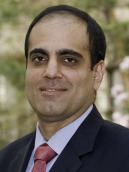
A number of factors have influenced the utilization of surgery in the management of BPH over the past many years. As a medical student, I watched my residents perform score after score of transurethral resections as part of their training. By the time I was a resident in the early 1990s, the use of transurethral resection was on the decline, in part due to the rapid uptick of radical prostatectomy in the prostate-specific antigen screening era, and, in part, due to the development of medical therapies by pioneers like my eventual Chair and mentor, Herb Lepor. In the present day, the management of BPH is completely changed as compared with the days of my training. Pharmacologic management is evolved to include specific targeted agents related to both the nature of prostate obstruction and the degree of associated bladder dysfunction. Surgical management has survived despite the pharmacologic advances, largely because of the desire of patients to have definitive resolution and the inevitable progression of the disease, despite drug therapy. Current surgical therapy has far less morbidity than the techniques of previous generations, but has become more complex given the multitude of potential technologies that can be employed, the necessary skill associated with each technique, and the more rigorous measures of success or failure.
In this issue of Urologic Clinics , we review the current state-of-the-art in managing lower urinary tract symptoms associated with BPH. Our guest editors, Drs Kevin T. McVary and Charles Welliver, have picked the most contemporary topics for the reader’s consideration and review. It is my sense that the management of BPH is largely driven by operator experience, preference, and access to individual technologies. It is my hope that issues such as this one will help our readers to develop a more evidence-based algorithm for both surgery and medical therapy in the management of their patients, thereby improving outcomes across the board. I am deeply indebted to Drs McVary and Welliver, and to the individual authors of each outstanding article, for their hard work and dedication in the preparation of this issue of Urologic Clinics .
Stay updated, free articles. Join our Telegram channel

Full access? Get Clinical Tree





